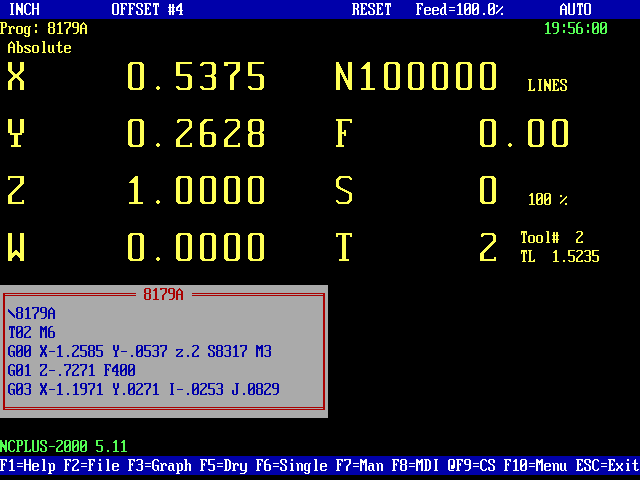
Three different displays can show where the part-program is. They can be switched any time:
Note: N display is cleared upon program start or program end, but not upon Reset.
For a 3-axis machine, virtual W looks like a 4th axis with position display in inch or mm. Using it moves Z of course.
This lets you raise or lower the tool manually with even more control than actual W.
You run a 200,000 line program.
Power failure. Broken tool. Reset.
New tool is loaded. To resume work you have to start from line 100,000.
On your mark - Get set - Go!
19:56:00
|
|
5 easy steps guide you thru the restart sequence.
You are in full control. Nothing is going to move by itself.
|
|
Select Search from the Main Menu (F10 | 3)
Enter 100000 (or where the program stopped)
Leave blank to find current XY
|
|
The program runs in test mode, scanning 40,000 lines per second.
When done you can let it search for more lines or proceed.
|
|
Program is ready to move to XY.
Feed override is zero. Distance to go is displayed.
|
|
Before resuming Z it's time to start the spindle. Most recent spindle command is ready.
|
|
Program is ready to resume the most recent programmed Z.
Feed override is zero. Distance to go is displayed.
|
|
In less than a minute you are ready to run.
Press CS to Run. You are still in Single, just in case.
If necessary, use the virtual W to fine-tune the depth on-the-fly.